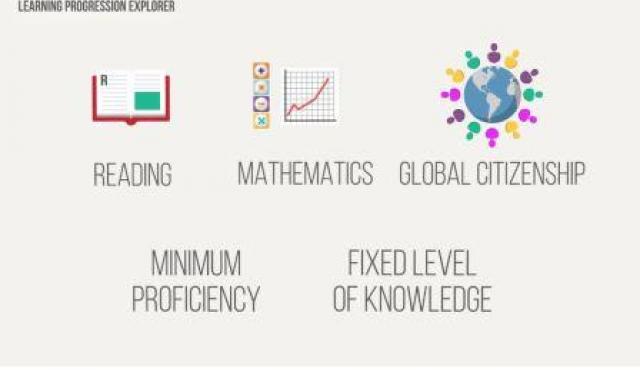
The push for globally-comparable measures of learning is truly underway, with work well advanced through the Global Alliance to Monitor Learning (GAML) to develop common metrics to benchmark student performance in reading and mathematics. The development of common metrics is fundamental to the achievement of Sustainable Development Goal 4 (SDG 4): ensure inclusive and quality education for all by 2030. Common metrics are crucial if we are to obtain a comprehensive and comparable picture of how well children are learning what they need to learn – the ‘quality’ part of the SDG 4 equation.
As part of their collaboration to support global efforts to reach SDG 4, the UNESCO Institute for Statistics (UIS) and the Australian Council for Educational Research (ACER) through its Centre for Global Education Monitoring (GEM) are developing the tools, methods and approaches to build comparable indicators of learning outcomes. At the heart of the collaboration lies the development of common learning metrics – also known as the UIS reporting scales – to describe and quantify learning progress in reading and mathematics.
Showing the progression of learning skills
Each common learning metric or UIS reporting scale will describe how the knowledge, skills and understandings in a domain typically progress. For example, the reading scale will describe how reading skills develop from the basic capacity to extract meaning from print through to sophisticated levels of comprehension. While the scales show the progression of learning skills, they do not define the ages or grades at which children are expected to acquire them, which are decisions made by countries.
To develop the UIS reporting scales, ACER and the UIS have drawn on a vast range of theory, curricula and existing assessments, from the global giants in this field, such as the OECD’s Programme for International Student Assessment (PISA) and the IEA’s Trends in International Mathematics and Science Study and Progress in International Reading Literacy Study (TIMSS and PIRLS), to a host of regional-level assessments, such as the Southern and Eastern Africa Consortium for Monitoring Education Quality (SACMEQ).
Once validated and accepted, the reporting scales will also help countries define the minimum proficiency levels that will be used to monitor progress towards SDG Target 4.1. By describing and quantifying learning progression, the reporting scales will make it easier for countries to collectively define what they consider to be a minimum proficiency level in reading, for example, at the end of primary or lower secondary education.
We want your feedback
Given the importance and complexity of this technical work, we want to get input and feedback from experts, like you, on our work to date.
The draft versions of the common metrics for reading and mathematics will be available soon from the ACER website, packaged as part of a prototype Learning Progression Explorer. This online tool developed by ACER will enable education stakeholders to study and explore the concept of learning progressions.
Understanding how results from different assessments relate to the common metrics, informed by expert perspectives, will help to validate these metrics. The goal in validating the metrics is to provide the foundation for tools and methods to enable globally comparable learning outcomes without imposing on countries a universal measurement processes that may be inappropriate or unsuited to local contexts.
To give us your feedback, please register to take part in our online consultation and explore the underlying work through the Learning Progression Explorer.
Leave a comment